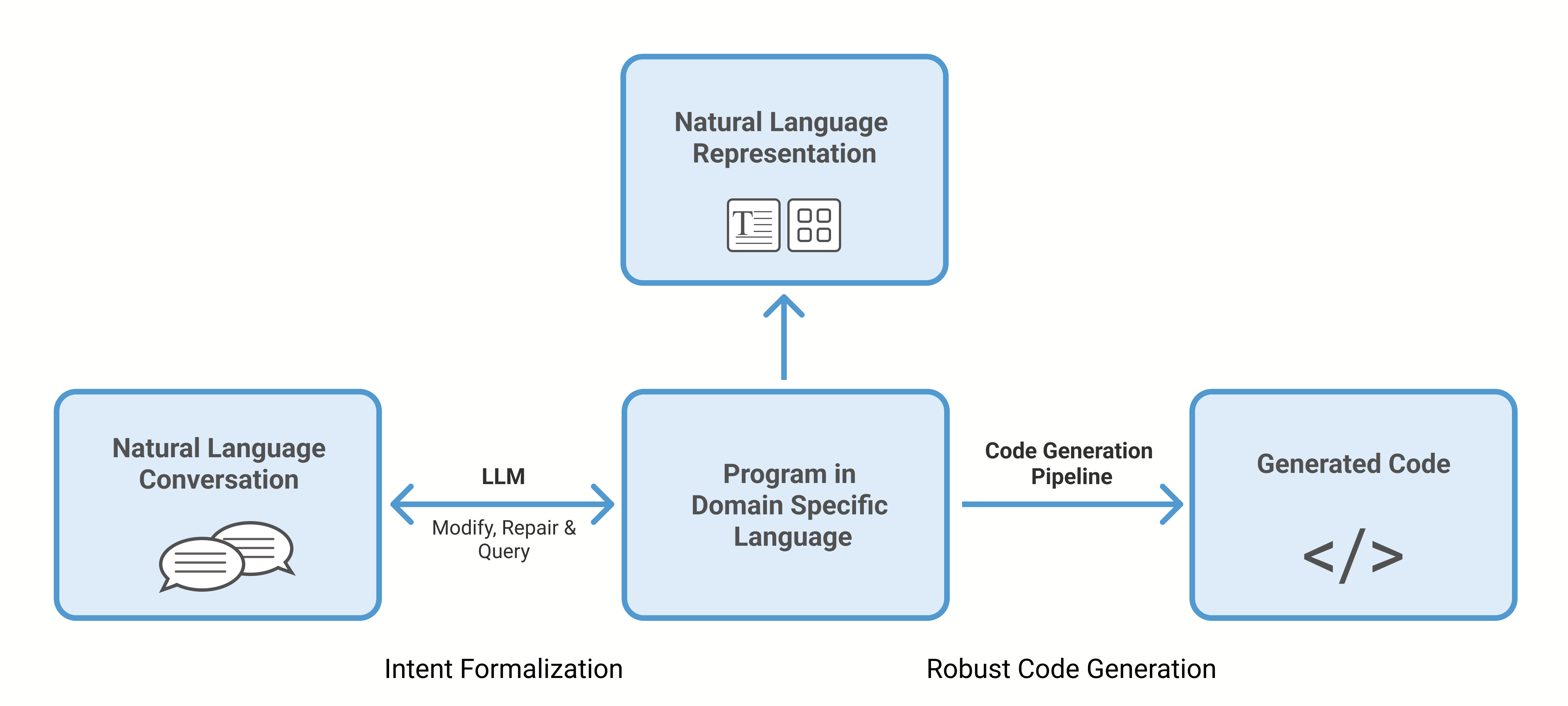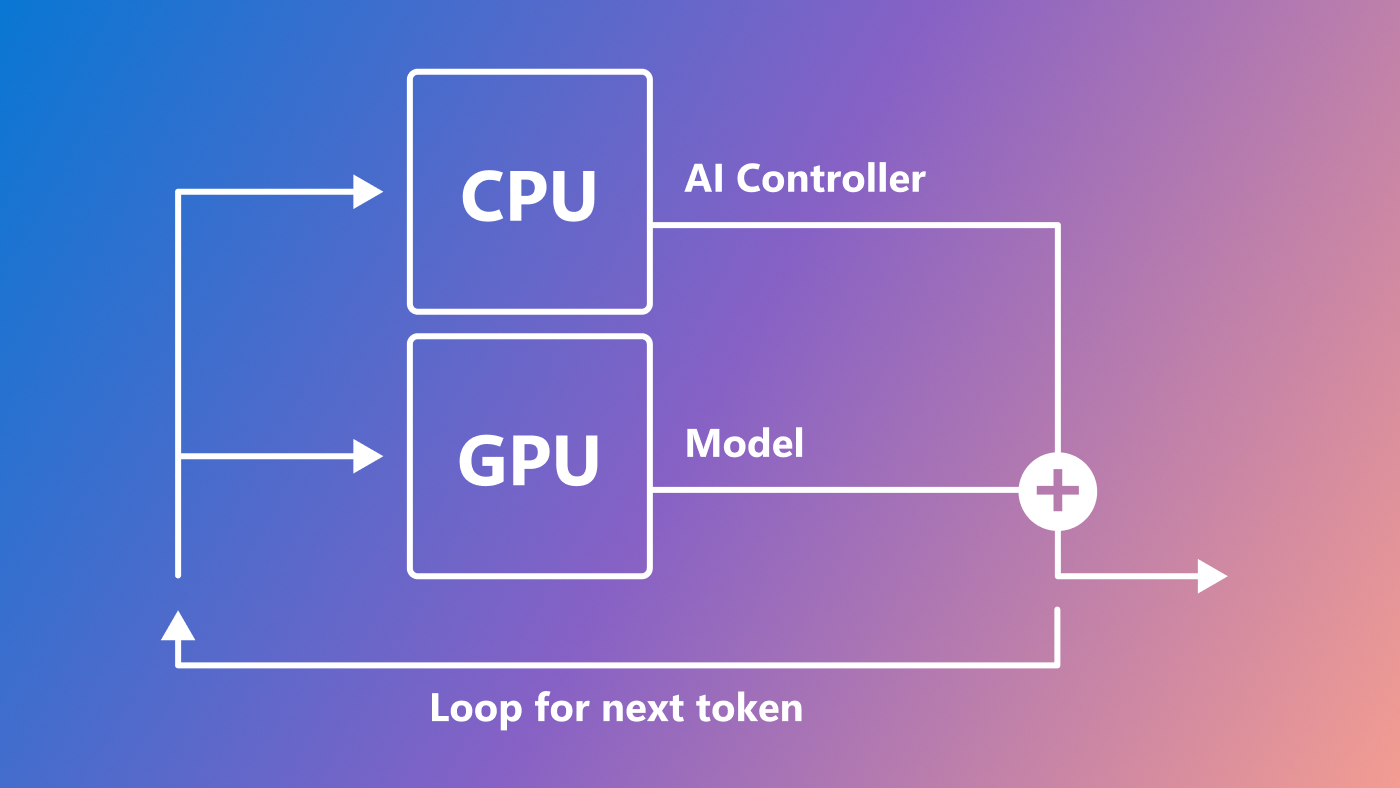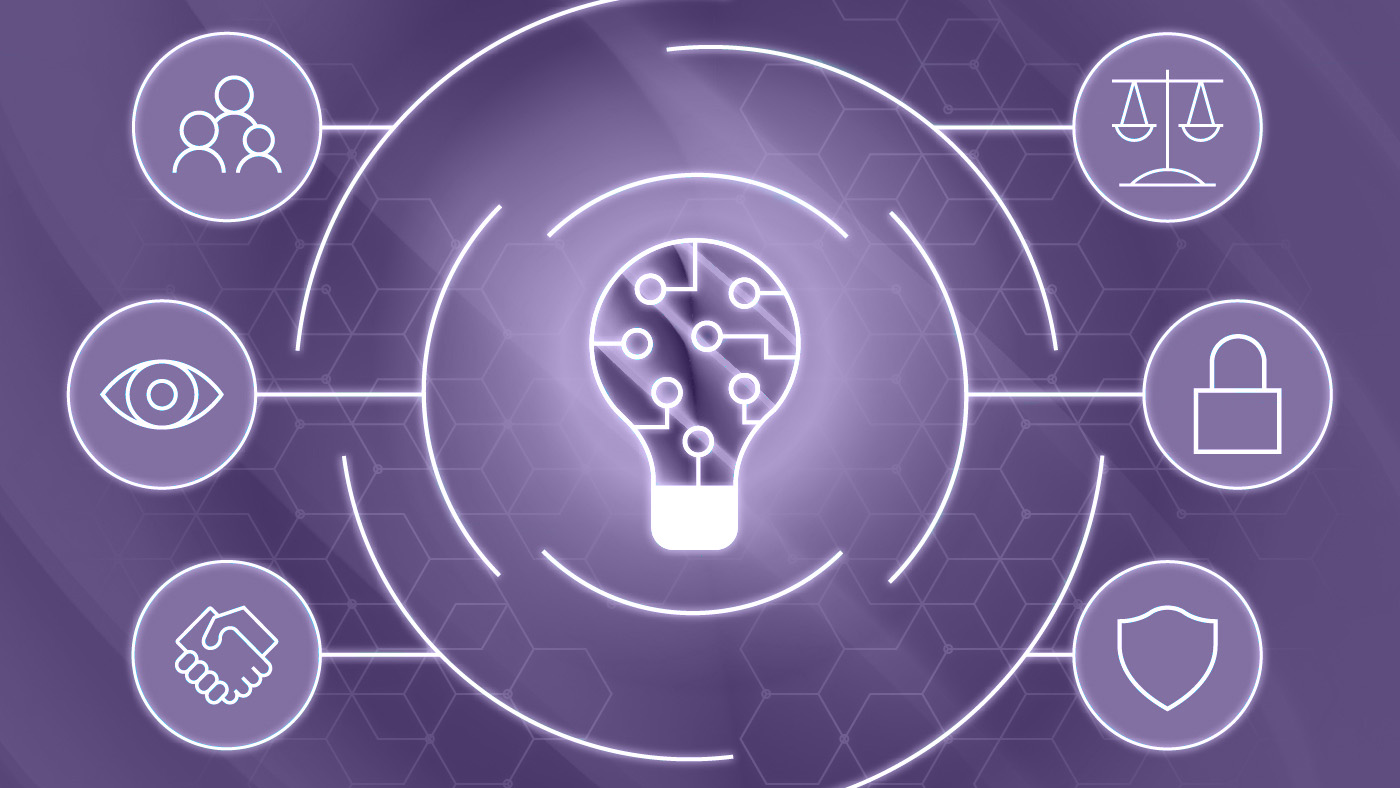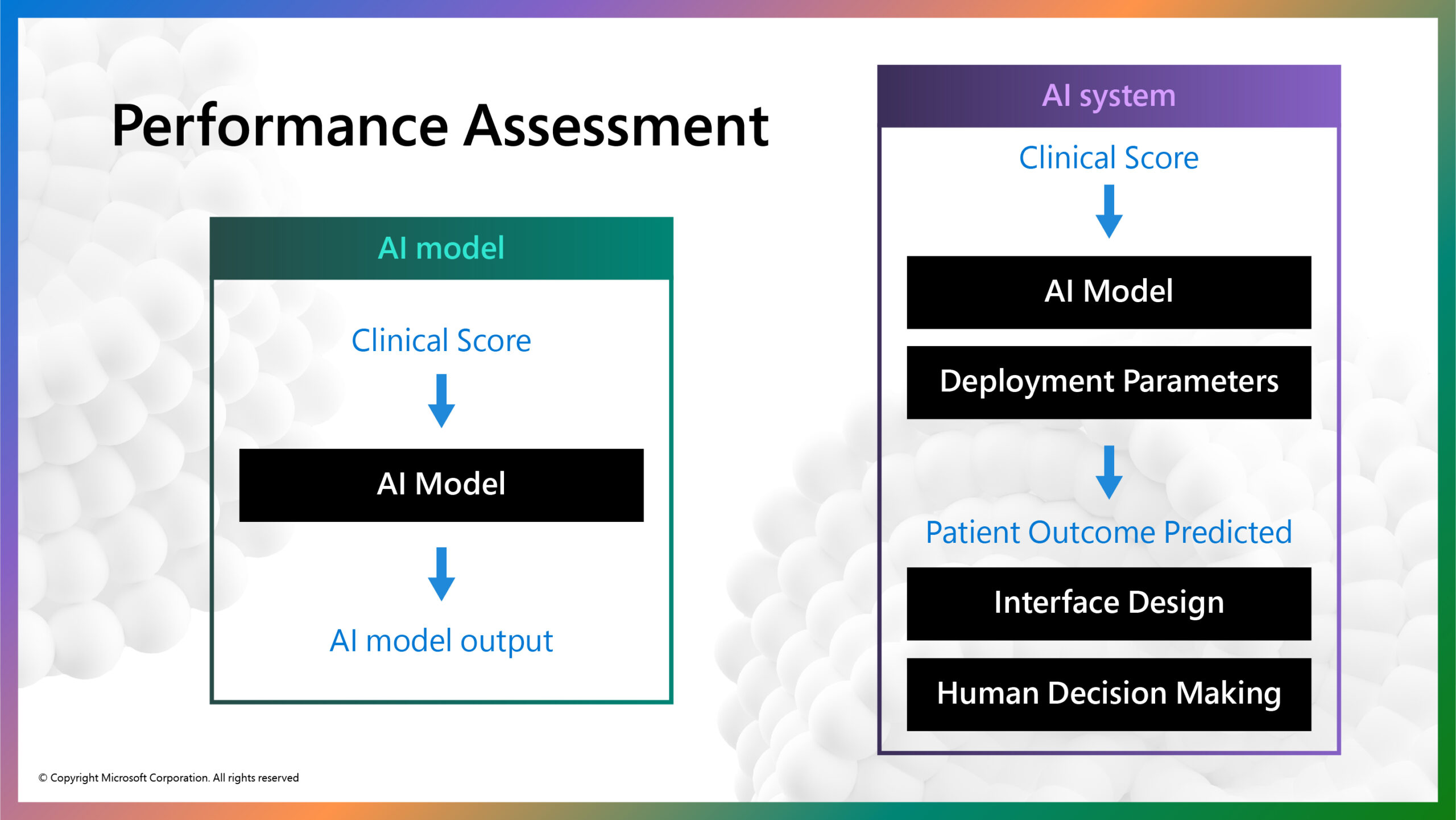This research is being presented at the Agami Summit 2023 (opens in new tab), an annual forum in Maharashtra, India, for innovation in the field of law and justice.

In one scenario of the future, such as the one imagined by Matt Welsh for the Association of Computing Machinery (ACM) (opens in new tab), AI will take the lead in coding while humans oversee the process. This shift will require people to take a supervisory role, focusing on high-level tasks while leaving the code details to AI. As we envision this transformation, we face a critical question: How can we reimagine software development to not just improve developer productivity but also to ensure software safety, reliability, and maintainability while keeping it personalized to developer preferences?
Realizing this outcome relies on AI and developers establishing a common understanding. While natural language can facilitate AI-developer interaction, it also introduces the potential for misinterpreting tasks. Existing solutions address this gap, prompting AI to communicate its understanding in a structured natural-language document. This document can then be inspected, edited, and approved by the developer. While effective, the developer still needs to vet the resulting AI-generated code for safety and reliability, requiring both domain and coding expertise. Our goal is to decouple this requirement, paving the way for numerous organizations and individuals, including those without coding expertise, to develop software.
Microsoft Research Podcast
Collaborators: Holoportation™ communication technology with Spencer Fowers and Kwame Darko
Spencer Fowers and Kwame Darko break down how the technology behind Holoportation and the telecommunication device being built around it brings patients and doctors together when being in the same room isn’t an easy option and discuss the potential impact of the work.
PwR approach
Programming with Representations (PwR, pronounced “power”), which we are presenting at the Agami Summit 2023 (opens in new tab), is a software development approach that relies on a domain-specific language (DSL), or representation, defined by a developer specializing in a specific domain. This representation includes built-in guardrails that are automatically implemented throughout the software development process. Once a representation is defined for a domain, PwR enables any developer interested in that domain to translate their intentions using natural language into a program in that representation. This process is illustrated in Figure 1.

PwR uses large language models (LLMs) to interpret user conversations and transform them into DSL programs. This process involves traversing a code-generation pipeline to ultimately derive executable code. However, despite advancements in LLMs’ code generation, these models still grapple with limitations like hallucinations and limited context windows. Using DSL reduces the amount of code that LLMs need to generate, as most code can be generated from the DSL, increasing accuracy throughout the process.
The DSL incorporates guardrails, ensuring that the essential components are there, such as the starting state of a workflow, clearly defined transitions, and error handling protocols. These guardrails can be automatically examined and communicated back to the developer in natural language, allowing for necessary corrections. While certain guardrails may enhance safety preferences, developers still must confirm that the intended functionality was implemented. PwR simply acts as a facilitator within the cycle involving the developer, the LLM, and the DSL checker.
PwR does not require developers to learn a custom DSL. Instead, it generates a natural-language representation (NLR) of the DSL. Developers can inspect this NLR, essentially programming in a natural language representation while the underlying DSL remains concealed. This approach grants developers the flexibility and ease of interacting with a natural-language representation while preserving the precision of their intent within the DSL. Additionally, developers can access a live test environment where their code can be hosted and tested for functionality. These capabilities are integrated into the PwR Studio tool, making it easy to get started.
PwR lowers the programming barrier, empowering nontechnical domain experts like teachers to create software tailored to their specific needs. Additionally, it can improve productivity for complex, multidisciplinary software engineering teams, enabling them to efficiently handle large volumes of changes.
Creating a welfare scheme application with PwR
Let’s take an example of how PwR can be applied. In a scenario where a nongovernment organization (NGO) aims to develop an application facilitating citizen access to government welfare schemes—enabling search, identification, and application processes involving authentication and deposits—the orchestration of multiple components is crucial. It is vital to accurately set up these components before deploying them at scale, given the program’s involvement with user data and monetary transactions.
Reliable orchestration of these types of components can significantly enhance all types applications. We initiate this process by building a custom DSL, encoding interconnected workflows comprising various tasks. Each task represents a singular action that might involve calling an external API or another workflow. This DSL seamlessly interacts with external APIs through plugins available through the PwR Studio store.
The following video demonstrates how PwR Studio, configured with the DSL workflow, constructs the NGO application. A developer augments the initial version of the application by incorporating the payment feature. This is accomplished by conversing with PwR Studio, understanding the specific requirements, and implementing necessary modifications. Additionally, the developer gains access to a test environment where they can launch and interact with the application in a controlled setting.
Looking forward
We intend to provide PwR Studio as an open-source integrated development environment (IDE) for creating software through conversations. Our initial aim is to facilitate workflow-based applications for NGOs and social enterprises that have little access to technical expertise. However, our ambitions stretch far beyond this scope.
With the recent success of GitHub Copilot for conversational code generation and recent announcements surrounding OpenAI’s GPTs framework for programming ChatGPT-like bots, it’s evident that AI is poised to democratize software development, granting everyone the ability to create software. With that, it’s imperative to prioritize safety and reliability. PwR is an approach that incorporates these priorities, where the insights of a few technical experts guide a large community of developers through the power of representation. We encourage the software development community to experiment with PwR, and similar ideas, to build safe and reliable AI-powered software.
Learn more on the PwR project page.
Acknowledgements
PwR is the result of a joined collaboration with several of our colleagues, including Sriram Rajamani, B. Ashok, Mohit Jain, Vageesh D C, Dinesh KA, and Sanoop Menon. We would also like to thank Vyshak Jain, Drishti Goel, Hamna, and Sanoop Menon for their help in creating the video.





